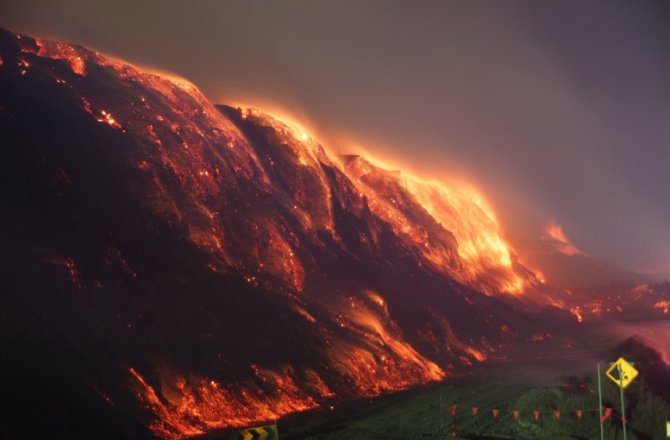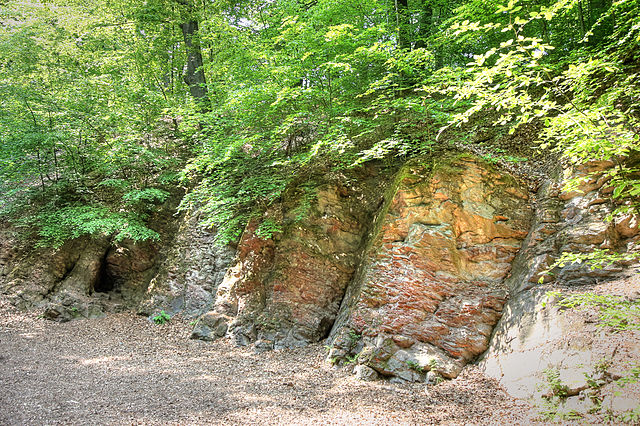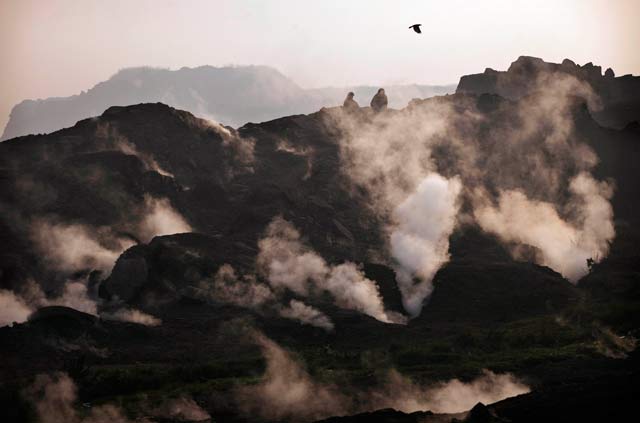If you’ve heard of underground coal fires, then you’ve probably heard of the one raging under the abandoned town of Centralia, Pennsylvania, since 1962. Fifty-two years is a long time — and a lot of coal — but that’s barely a blink compared to Burning Mountain in Australia, which has been ablaze for 6000 years.
Coal seam fires are incredibly common, as it happens, and thousands of them are now burning underground across the world. A coal seam some 11,000km south of Australia’s Burning Mountain caught fire a month ago, spewing poisonous gases and prompting intense firefighting efforts. Once a subterranean coal seam fire gets out of hand — as in Centralia, as in Burning Mountain — it’s nearly impossible to put out.

The coal seam fire at Hazelwell Mine in Australia, which firefighters have been trying to put out for over a month. Picture: Country Fire Authority/Keith Pakenham
At Burning Mountain, also known as Mount Wingen, sulphur-tinged smoke is the only hint of a massive coal seam burning 21m under the ground. Heat and toxic gases from the fire have left it rocky and jagged in parts, and the land has caved in.
How the mountain was first set ablaze is a mystery. It could have been a lightning strike, forest fire, spontaneous combustion, or even aboriginal burning practices could even have been the initial spark.
At Germany’s Brennender Berg — literally “Burning Mountain” in German — the coal has been on fire since 1688. Legend has it a shepherd set the initial blaze, but spontaneous combustion may be a more likely cause.

Brennender Berg. Picture: Wikimedia Commons
It’s with human intervention that coal seam fires have really caught on, so to speak, in the past century. Mining exposes coal to oxygen, and coal, as we know, burns very, very easily. With plenty of fuel and oxygen, a small spark can ignite a blaze that grows to cover miles and miles.
China, with its thousands of small-scale mines, and India, with its crumbling old and large mines, have the most serious underground fire problems. The burning coal releases potentially toxic elements like arsenic, fluorine and selenium into the air.

Coal fire in India from January 2011. AP Photo/Kevin Frayer.
The American West is also smouldering with underground fires in abandoned coal mines. They melt snow in the winter, set grass fires in the summer, and spew poisonous elements all year around. One energy company actually wants to set more of the coal ablaze, “mining” it by capturing the gas emitted from the burning coal.
Even more remarkably, ancient subterranean fires shaped the very landscape of the West. “Much of the landscape of the American West — its mesas and escarpments — is the result of vast, ancient coal fires,” writes Kevin Krajick in Smithsonian Magazine. “Those conflagrations formed ‘clinker’ — a hard mass of fused stony matter. Surfaces formed in this way resist erosion far better than adjacent unfired ones, leaving clinker outcrops.”
Long before we began excavating coal to burn in our factories, coal seams have been hidden rivers of underground flame — usually dormant but occasionally destructive. Poking holes in the ground with mines has only awakened the fiery potential of coal.
Top image: Mount Wingen via the Department of Environment, Climate Change and Water
